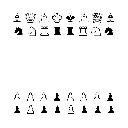Why were and are african americans called the N word? Where did it begin and did someone just come up with it on the fly or something? I mean why not call people Daisy Tulips instead the n word?
 merde alors @ merde @sh.itjust.works 帖子 421评论 3,069加入于 2 yr. ago
merde alors @ merde @sh.itjust.works 帖子 421评论 3,069加入于 2 yr. ago

merde alors @ merde @sh.itjust.works
帖子
421
评论
3,069
加入于
2 yr. ago
Short Sword (Yatagan) from the Court of Süleyman the Magnificent (reigned 1520–66)







why is the link removed?
☞ https://en.wikipedia.org/wiki/Nigger